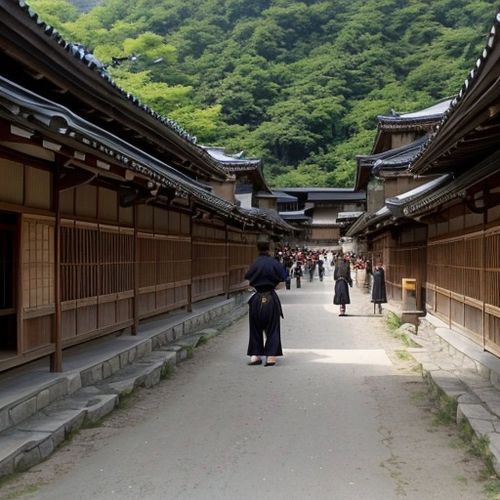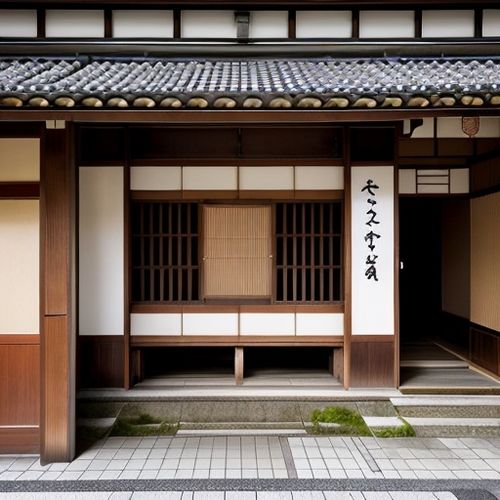The recent demolition of a historic washi paper-themed inn in Japan has sparked intense debate about how the nation preserves its cultural heritage while pursuing modernization. Located in a quiet neighborhood known for its traditional paper-making workshops, the 90-year-old ryokan had become a living museum of sorts, with walls lined with handmade washi panels and rooms featuring paper lanterns crafted by local artisans. Its destruction to make way for a modern business hotel has left many questioning whether Japan is losing tangible connections to its artisanal past in the name of progress.
Local preservationists argue that the washi inn represented more than just architecture—it embodied a vanishing way of life. For generations, the establishment served as a hub for paper makers traveling to sell their wares, with its tatami rooms bearing the indentations of countless paper-laden trunks. "This wasn't merely a building," lamented a third-generation paper merchant at the demolition site. "The walls absorbed the smell of mulberry bark from our workshops. The shoji screens showed how washi ages beautifully over decades. These are lessons no textbook can teach."
The controversy highlights Japan's complex relationship with its material heritage. Unlike stone castles or shrines that benefit from formal protection, many working-class cultural spaces exist in legal limbo. The washi inn fell outside designated preservation zones despite its cultural significance, as it lacked the aristocratic pedigree or architectural grandeur that typically earns protected status. This has led scholars to question whether preservation criteria need updating to safeguard spaces tied to craft traditions rather than just political or religious history.
Compounding the issue is Japan's shrinking population and changing travel patterns. The inn's owners—a family facing declining bookings—claimed maintenance costs for the aging wooden structure became unsustainable. "We kept the paper screens repaired and the beams treated for thirty years after it stopped being profitable," the eldest son explained. "But when the 2019 typhoon damaged the roof, we had to choose between investing in seismic upgrades or accepting a developer's offer." His dilemma reflects challenges faced by countless traditional businesses across rural Japan.
Interestingly, the demolition has unexpectedly galvanized washi conservation efforts. Within weeks of the inn's destruction, a coalition of paper makers launched a digital archive documenting the building's unique paper features, from its innovative washi insulation to account ledgers written on local paper stock. Meanwhile, three nearby towns have accelerated plans to designate their remaining washi-related structures as cultural assets. "Sometimes it takes a loss to make people see what's disappearing," noted a cultural anthropologist involved in the documentation project.
The case also raises questions about adaptive reuse versus complete preservation. Some architects argue the inn could have been partially retained—perhaps converting the paper-lined lobby into a gallery within the new hotel. Others counter that such compromises often dilute a space's authenticity. "Washi isn't just something you frame behind glass," objected a master papermaker. "It needs to be touched, to breathe with the humidity, to show generations of use. That living relationship can't be museumized."
As construction crews clear the site, the broader implications continue to unfold. Tourism officials worry about losing distinctive cultural experiences that drew visitors off the beaten path. Younger generations express surprise at discovering their hometown's paper-making legacy through the controversy. And scholars note this isn't an isolated case—similar debates have emerged around aging sake breweries, indigo dye workshops, and other vernacular industrial sites nationwide.
Perhaps most significantly, the washi inn's demise has prompted policy discussions at the prefectural level about creating new heritage categories for "working tradition" sites. Proposed measures include tax incentives for maintaining such properties and low-interest loans for upgrades. While too late to save this particular inn, these conversations may help other at-risk cultural spaces survive Japan's relentless urban renewal—not as frozen relics, but as living continuations of the crafts they represent.
The story of this unassuming ryokan ultimately reveals the difficult choices societies face in preserving intangible heritage through physical spaces. As one preservation advocate poignantly observed during the final demolition phase: "We aren't just losing buildings. We're losing the smell of the glue pots, the sound of paper being folded, the memory of where the light fell at certain times of day—all those sensory details that make a tradition real." In an era of rapid change, Japan's challenge lies in finding ways to honor such ephemeral qualities before they vanish like so much dissolved paper fiber in water.

By Jessica Lee/Apr 7, 2025

By Emily Johnson/Apr 7, 2025

By Jessica Lee/Apr 7, 2025

By Joshua Howard/Apr 7, 2025

By Amanda Phillips/Apr 7, 2025

By Sophia Lewis/Apr 7, 2025

By Samuel Cooper/Apr 7, 2025

By Michael Brown/Apr 7, 2025

By Elizabeth Taylor/Apr 7, 2025

By Sarah Davis/Apr 7, 2025

By Daniel Scott/Apr 7, 2025

By Grace Cox/Apr 7, 2025

By Grace Cox/Apr 7, 2025

By Ryan Martin/Apr 7, 2025

By Christopher Harris/Apr 7, 2025

By Lily Simpson/Apr 7, 2025

By Elizabeth Taylor/Apr 7, 2025

By Christopher Harris/Apr 7, 2025

By Noah Bell/Apr 7, 2025

By Thomas Roberts/Apr 7, 2025